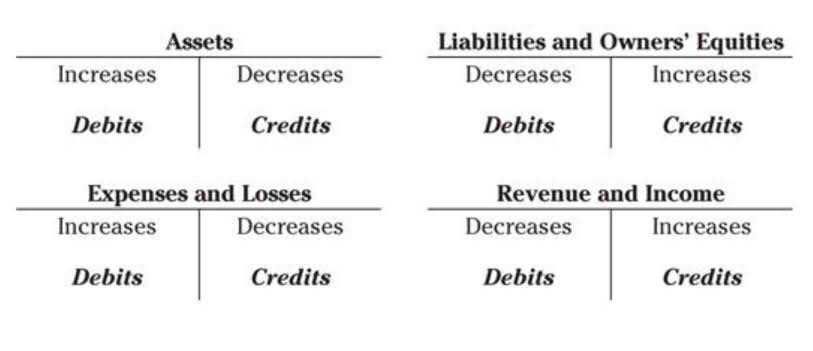![]()
The main purpose of break-even analysis is to determine the minimum output that must be exceeded for a business to profit. It also is a rough indicator of the earnings impact of a marketing activity. A firm can analyze ideal output levels to be knowledgeable on the amount of sales and revenue that would meet and surpass the break-even point. If a business doesn’t meet this level, it often becomes difficult to continue operation. Either option can reduce the break-even point so the business need not sell as many tables as before, and could still pay fixed costs. This could be done through a number or negotiations, such as reductions in rent payments, or through better management of bills or other costs.
Double-entry Accounting
If the breakeven point is too high, then a business may not be able to ever earn a profit, especially when its maximum capacity level is the same as or less than its breakeven point. For example, a business that sells tables needs to make annual sales of 200 tables to break-even. At present the company is selling fewer than 200 tables and is therefore operating at a loss. As a business, they must consider increasing the number of tables they sell annually in order to make enough money to pay fixed and variable costs.
Key Components of a BIM Execution Plan:
These costs arise when you need to make additional investments after reaching a certain production volume, e.g., for larger production areas, additional equipment, or more staff. The break-even point (BEP) is the stage where total revenues equal total costs. In simpler terms, it’s the point where a business covers all its expenses bep definition and begins to generate profit. The break-even point (BEP) in economics, business—and specifically cost accounting—is the point at which total cost and total revenue are equal, i.e. “even”.
It Determines Your Profitability
Manufacturers can calculate the amount of product that must be produced and sold during a period. Lastly, for businesses with multiple products, break-even analysis simplifies complex cost structures into a single point, which may not reflect true profitability. It’s a common mistake for inexperienced entrepreneurs to underestimate what they need for personal expenses including health insurance, retirement savings and reserves. Thus, to cover its fixed and variable expenses in this example of the breakeven point, the business has to make SAR 5 million in sales.
- The accounting breakeven point is the sales level at which a business generates exactly zero profits, given a certain amount of fixed costs that it must pay for in each period.
- The redesign effort came about for several reasons, chief among them a reduction in paper costs and improved counterfeit deterrence through better public recognition of currency features.
- Otherwise, the business will need to wind-down since the current business model is not sustainable.
- Read on to discover the formula for the break-even point, what you should pay attention to in a break-even analysis, and why production can sometimes be worthwhile even if you don’t surpass the break-even threshold.
- The break-even point indicates the sales volume at which your revenue exactly matches the costs you have invested.
- Let’s use the example of a small business owner’s coffee stand to provide a practical example of how you use the break-even point to ensure cash flow.
Variable Costs
This strategic approach not only secures financial stability but also supports dynamic business growth, ensuring that companies can adapt to changing market conditions and seize opportunities as they arise. The entrepreneur has paid off her loan and serves an average of 150 customers per day. For example, customers might only buy from you if you offer a full range of industry-standard products. If you consistently delist these items, you become less attractive to your target audience, which could also reduce sales of profitable products. Ideally, from an economic perspective, you wouldn’t offer products that won’t reach the break-even point.
What is a BIM Execution Plan (BEP)?
- Alternatively, the break-even point can also be calculated by dividing the fixed costs by the contribution margin.
- Today, you’re going to learn everything you need to know about profitable online sales.
- In conclusion, just like the output for the goal seek approach in Excel, the implied units needed to be sold for the company to break even come out to 5k.
- Even the ones you might not think about right away, e.g., costs of customer returns, variable shipping costs, etc.
- For large quantities, alternative production technologies can become economically viable and abruptly reduce unit costs.
Without understanding BEP, businesses may struggle to determine whether a product or service is truly profitable or merely covering costs. In contrast to fixed costs, variable costs increase (or decrease) based on the number of units sold. If customer demand and sales are higher for the company in a certain period, its variable costs will also move in the same direction and increase (and vice versa).


With the break-even point, you can strategically plan and forecast the financial health of your business or new ventures. It serves as a vital tool in financial planning, helping to ensure that investments are sound and aligned with business goals. Regular review and adjustment based on changes in the market or business model are essential to maintain accuracy and relevance. The business owner assumes that around a fifth of her customers would buy a piece of cake with their coffee.
Are there tools that automate break-even analysis?

The break-even point is the point where total revenue equals total costs, meaning the business neither gains nor loses money. In other words, it is the level where all production and operational costs are covered by the revenue generated. The total variable costs will therefore be equal to the variable cost per unit of $10.00 multiplied by the number of units sold. Regularly monitoring this point helps you adjust pricing strategies and control costs in response to market changes. Conducting sensitivity analysis further allows you to see how alterations in pricing, costs, or sales volume affect your break-even point, aiding How to Run Payroll for Restaurants strategic decisions.

How to Calculate the Break-Even Point (BEP) of Your Ecommerce Business
For the period considered, the result is zero, meaning that there is neither profit nor loss. The production level at which total sales for a product equal total costs is known as the breakeven point. BEP helps you determine how many products need to be sold to avoid losses. https://c4international.com/how-to-start-a-sole-proprietorship-in-2024/ The break-even point is where your total revenue matches your total costs, meaning you don’t make a profit or incur a loss.
